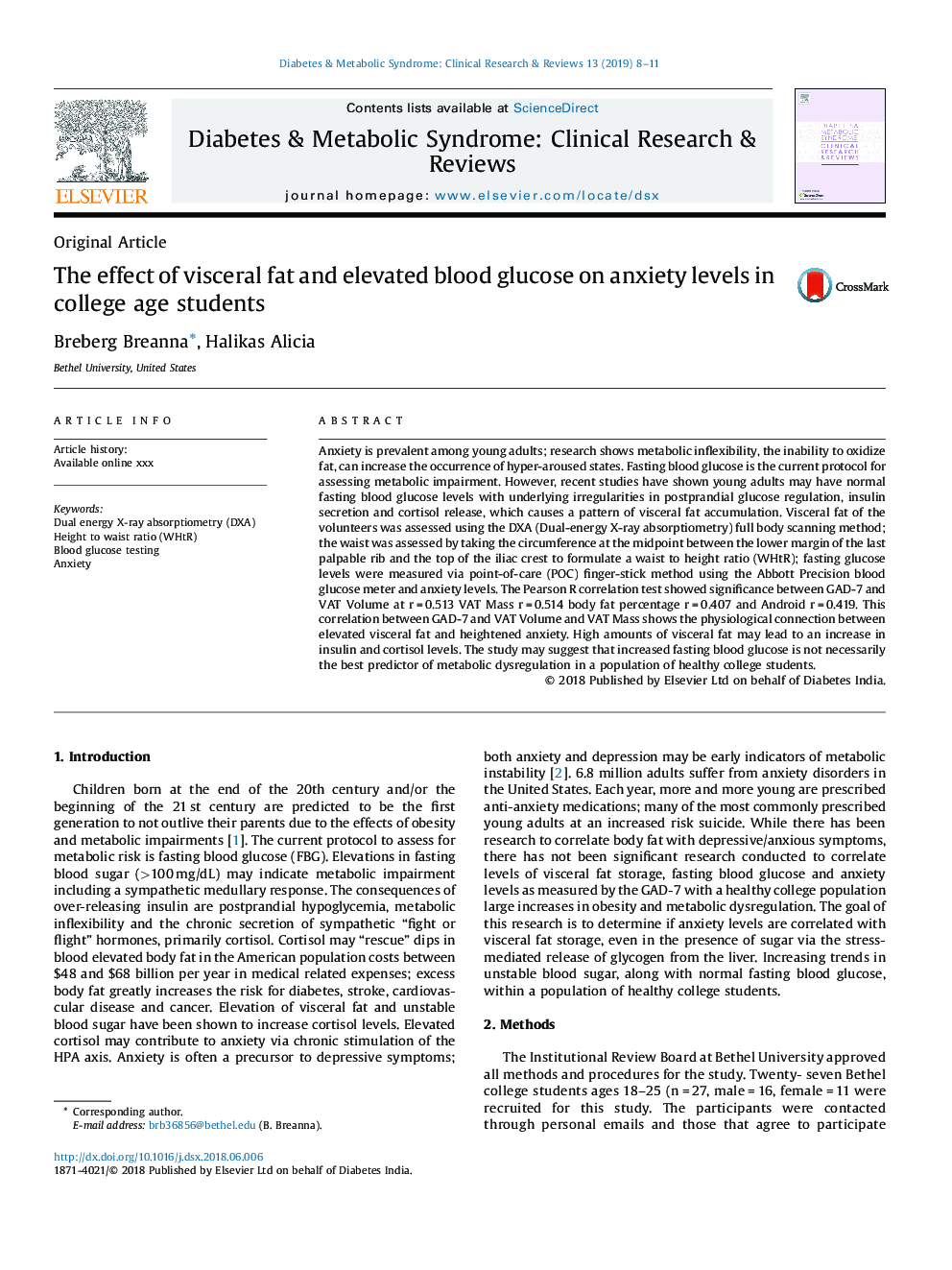| Article ID | Journal | Published Year | Pages | File Type |
|---|---|---|---|---|
| 8962948 | Diabetes & Metabolic Syndrome: Clinical Research & Reviews | 2019 | 4 Pages |
Abstract
Anxiety is prevalent among young adults; research shows metabolic inflexibility, the inability to oxidize fat, can increase the occurrence of hyper-aroused states. Fasting blood glucose is the current protocol for assessing metabolic impairment. However, recent studies have shown young adults may have normal fasting blood glucose levels with underlying irregularities in postprandial glucose regulation, insulin secretion and cortisol release, which causes a pattern of visceral fat accumulation. Visceral fat of the volunteers was assessed using the DXA (Dual-energy X-ray absorptiometry) full body scanning method; the waist was assessed by taking the circumference at the midpoint between the lower margin of the last palpable rib and the top of the iliac crest to formulate a waist to height ratio (WHtR); fasting glucose levels were measured via point-of-care (POC) finger-stick method using the Abbott Precision blood glucose meter and anxiety levels. The Pearson R correlation test showed significance between GAD-7 and VAT Volume at râ¯=â¯0.513 VAT Mass râ¯=â¯0.514 body fat percentage râ¯=â¯0.407 and Android râ¯=â¯0.419. This correlation between GAD-7 and VAT Volume and VAT Mass shows the physiological connection between elevated visceral fat and heightened anxiety. High amounts of visceral fat may lead to an increase in insulin and cortisol levels. The study may suggest that increased fasting blood glucose is not necessarily the best predictor of metabolic dysregulation in a population of healthy college students.
Related Topics
Health Sciences
Medicine and Dentistry
Cardiology and Cardiovascular Medicine
Authors
Breberg Breanna, Halikas Alicia,
